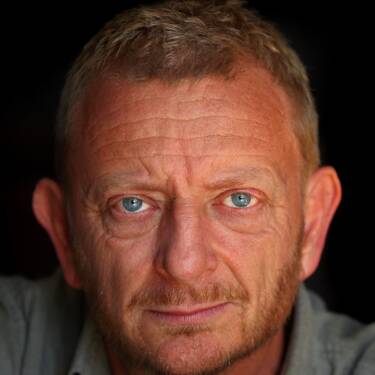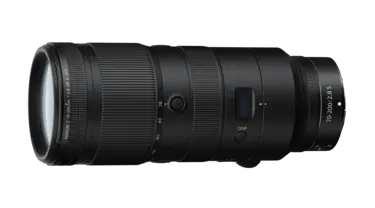So you want to be an F1 photographer?

To celebrate the launch of our new sports-ready super-tele zoom lens, the NIKKOR Z 180-600mm f/5.6-6.3 VR, we sat down with Nikon Ambassador and F1 photographer Clive Mason. The Senior Sports Photographer for Getty Images – the official photographer of F1 – shares his tricks of the trade and reveals how he launched his career
Nikon magazine: How did you start taking pictures of cars? How did you move into F1?
Clive Mason: In the late 1980s, I was working at a local paper in Northampton, England, where I lived. I was asked to attend Silverstone – the home of British Grand Prix – because that was part of my patch. I loved taking pictures of cars. When it came to joining Allsport (now part of Getty Images) in 1994, the office asked if I had ever shot any cars before. One thing led to another, and they asked if I fancied shooting the Grand Prix!
The first Grand Prix was in Japan. Having only ever done Silverstone, I remember my excitement. I did more European Grand Prix after. Then, in 2000, we had a contract with Shell Oil, who were the official suppliers of lubricant for Ferrari, and the office asked me if I wanted to photograph every race, in partnership with Shell Oil. That’s how I got my break into F1.
I’m most well-known for my F1 photography, but I shoot a lot of sports, including rugby, football, tennis and cricket. I’m an all-rounder sports photographer – which is what I set out to achieve.

Clive Mason

You must really love sport, then?
I prioritise capturing the unique moments of sports rather than immersing in the sports themselves. I still follow and understand the sports I shoot, of course, but my approach allows me to shoot subjectively. That way, I don’t get too caught up in moments. Sports photography is like nothing else – moments only happen once. If you miss it, you can’t reset. You can’t move the light. I absolutely love the challenge.
How do you find a unique shot?
In F1, you have a 5 km track to wander around to find angles. It’s often the case of walking about, deciding where to shoot, and also using fences creatively, such as placing the lens against the safety fence and blurring the background to create lines. It does get harder, of course, because the more you go to a place, the more shots you have already taken. The key is to be aware of the light and weather and where the floodlights and hot spots are. If you get an opportunity to shoot from a new building, shoot from there. Once you’re in your spot, you’ll need to think about whether to shoot fast or slow or have a minimal depth of field, for example. In the past, there was always this thing in F1 that you had to see movement in the wheels – that’s been eroded now, thankfully. Photographers are now even shooting at under f/2.8 to isolate the background.


What’s in your kitbag?
I have three Nikon Z 9 bodies, plus a NIKKOR Z 14-24mm f/2.8 S, NIKKOR Z 24-70mm f/2.8 S, NIKKOR Z 70-200mm f/2.8 S, NIKKOR Z 600mm f/4 TC VR S and NIKKOR Z 100-400mm f/4.5-5.6 VR S, which I use for podiums. I also use the Nikon SB-5000 Speedlight flash. The NIKKOR Z 28mm f/2.8 is a tiny lens I use for shooting through the fence. Often, you can’t get the front element of a lens through the fence, so this slim one is perfect for wide shots. From my experience, you’re better off shooting through the fence at the angle you want, rather than through the hole at a slightly wrong angle with a bigger lens (such as the 600mm), because you’ll notice a slight difference in contrast as the fence is so close to the front of the lens.
Do you have certain lenses on different bodies?
That will depend on the race. If I’m somewhere in the desert in the Middle East, for example, I avoid swapping lenses because of the dust and sand. One Z 9 will always have the 600mm, and the second Z 9 will be swapped around with short lenses. Nine times out of ten, the third body is a spare. In Monaco and Singapore, I use a 400mm to show more of the surroundings.
Ultimately, as press photographers we don’t get to pick where we stand. I prefer a prime’s sharpness – I have the 28mm, but also a NIKKOR Z 85mm f/1.2 S and an AF-S NIKKOR 105mm f/1.4E ED with a Mount Adapter FTZ II on but, if you turn up to the race with just primes, you simply won’t get the shots you want if you can’t move.

Do you use flash?
I use flash for celebration photos when it’s dark an hour or so after the race. You can get creative here with the Red Bull floodlights and create a silhouette, for example, but I’d have to make sure Red Bull is also predominant. I think it’s a mixture of being able to provide both reportage and more creative imagery, because that’s what your client wants.
RAW or JPEG?
As a company, we shoot in JPEG to adhere to editorial integrity guidelines – RAW images can be too greatly edited – and also because of storage. Plus, our images are sent live from the camera via an FTP site. It’s a selective edit, of course, but in this industry you have to work fast, and sending JPEGs helps with this.

What’s your advice for those wanting to get going in the world of F1 photography?
My first advice would be to learn about motorsport photography. Whether that’s go-karting or visiting a small circuit, show that you have an interest in motorsports first. Learn how to capture a moving vehicle, how to shoot from different and varied angles, and then ask yourself, “What’s the next step?” Often, I view photographers’ work and it’s 500 images from the same position. What I want to see is ten pictures that are all different. Show me you can pan, use light, freeze a head-on and blur the fence. No one wants to browse through 500 images of the same shot.
When I first started photographing football, it was at a park football Sunday league. At no point did I think, “I want to shoot Northampton Town”, who at the time were fourth division. When the time came and I first got given the opportunity to shoot Northampton Town Football Club versus Halifax, I really thought I’d made it! It was the lowest form of league football, but I was elated. I thought I had achieved everything. Little did I know at that point that I’d go on to shoot the World Cup.
Prove you can shoot the sport at grassroot level, as ultimately that impresses people, and always aim at the realistic end of the spectrum to start with, because no one goes straight into F1. When I was starting out in the 1980s, I was told by a Fleet Street photographer, a complete legend in the industry, that my work was rubbish! He challenged me to go out and shoot sports in the local park and then come back to him with 20 images in a year’s time. I turned up at his office exactly a year later.

Do you have to be quite fit to be a F1 photographer?
With the mirrorless system, cameras are a lot lighter, but, yes, there is a lot of walking with heavy gear and conditions can be really hot or cold and wet. You have to be prepared for everything. I travel with a Think Tank camera bag to keep everything correctly stored, watertight and dust-free. Some photographers bring a kneeling pad for when they’re on the ground.
How does photographing F1 differ to other sports you shoot?
With football, for example, you’re there to record and it’s often very gritty. With F1, the options for creativity are much greater because you’ve got fast-moving objects in different conditions, plus there’s light, sunsets and floodlights. F1 is a creative playground – you are free to express.

What’s one thing you’ve learned as a F1 photographer?
You will have to sacrifice an incredible amount. It takes dedication and time and understanding, and it will drain you. However, if you want it, you must go for it and keep pushing. Do the research, make the effort, learn and ask questions. Everything is so much more accessible now with social media – a lot more than when I was starting out. Research your idols and learn from those who have come before you. Understand what they’ve achieved, how they’ve achieved it and what kit they use. As for me, I have had an absolutely incredible career. I’ve loved every second of it.
Discover the new NIKKOR Z 180-600mm f/5.6-6.3 VR
Featured products
More in sports and action
Getting started with shooting action adventure
Shooting mountain sports with Aurelie Gonin and the lightweight Z 8

Unlock greater creativity












